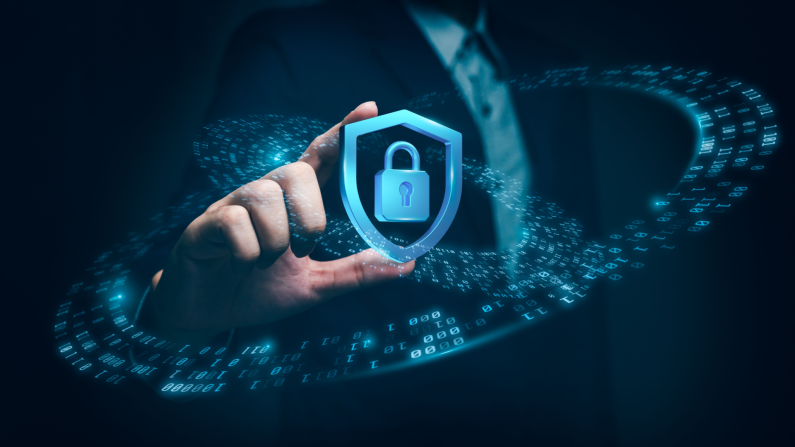Until recently, biometrics—fingerprints, facial scans, or iris recognition—seemed the pinnacle of digital security.
It turned our bodies into a unique key that couldn't be forgotten or lost. But over time, vulnerabilities were discovered in this concept as well. Voice deepfakes emerged, capable of bypassing speech recognition systems, along with high-quality 3D masks that trick cameras with Face ID.
The problem is that biometric data is static. That is, a fingerprint or the geometry of a face, once compromised, cannot be replaced like a password. A leak of such a "digital cast" of one's identity creates a lifelong threat. This is why developers continue to search for new, more dynamic and resilient authentication methods, heralding the arrival of the post-password and even post-biometrics era.
Behavioral Patterns as a Unique Key

If traditional biometrics answers the question "who are you?" based on what you look like, the new methods focus on "how you do it." This refers to behavioral biometrics—a technology that analyzes the unique patterns of our actions.
-
Keystroke Dynamics: Algorithms analyze not what you type, but how you type it—rhythm, speed, pressure, the time between pressing certain keys. Mimicking this is practically impossible. For instance, BioCatch—an Israeli company and a market leader—has technology that analyzes over 2,000 behavioral parameters, including typing rhythm, mouse movements, touchscreen pressure, and even how a user holds their device. BioCatch collaborates with major global banks like HSBC and Barclays to combat fraud. Their case studies and technology are widely covered in industry publications such as Finovate and Forbes. Another pioneer in this field is BehavioSec (part of LexisNexis Risk Solutions). The company also provides solutions for continuous authentication based on behavioral patterns.
-
Navigation and Scrolling Patterns: A live user scrolls a page at an uneven pace, pausing to read. Bots, however, often demonstrate a perfectly linear or mechanically repetitive scrolling pattern.
-
Gait and Gestures: Smartphone cameras or specialized sensors can identify a person by their characteristic gait or even by how they hold and move the device in space.
-
Vein Pattern Recognition (Vein Biometrics): This method, gaining popularity in the financial sector in countries like Japan, is considered more secure than fingerprints. It scans the unique pattern of veins in the palm or finger, which is hidden under the skin, making it impossible to observe or copy from a surface; furthermore, authentication requires live blood flow. Fujitsu PalmSecure is one of the most well-known and widespread vein biometric technologies. It uses infrared light to scan the unique pattern of palm veins. This technology is widely used in Japan for authentication at ATMs, in corporate access control systems, and even in schools for lunch payments.
These behavioral models create a continuous and dynamic digital portrait that is extremely difficult to forge, as it is based on unconscious muscular and motor reactions.
How Else AI Distinguishes a Live User from a Bot

The next frontier is the transition from simple authentication to continuous verification. Systems now strive not just to "identify" a user once, but to constantly confirm their "degree of humanity" and legitimacy throughout the entire work session.
To achieve this, advanced AI systems are used, analyzing a complex of micro-features:
-
Micro-Movement Analysis: High-resolution cameras track involuntary eye twitches (ideomotor acts), facial wrinkles, or changes in skin texture under different lighting angles—signs absent in a static mask or video. iProov—a British company whose technology is used by the UK and US governments for remote identity verification. Their Face Check system uses a brief flash of light from a smartphone camera to illuminate the face and create a unique, one-time digital signature.
-
Biodynamics: Sensors can detect a pulse or breathing rhythm through the camera, which serves as proof of life. The most modern systems, reported by researchers from the University at Buffalo and Stanford, utilize remote photoplethysmography (rPPG) technology. A smartphone camera discreetly tracks microscopic changes in facial skin color caused by blood pulsation in the vessels.
-
Rendering Artifact Detection: Generative models that create deepfakes, despite their quality, leave microscopic artifacts—distortions at object boundaries, unnatural skin texture, errors in eye reflections. AI, trained on millions of real and fake images, has become an expert at detecting these "digital seams."
-
3D Mapping and Response to Stimuli: The system may ask a user to turn their head, smile, or blink. In doing so, it builds a 3D map of the face and checks if the reactions correspond to the natural biomechanics of a human face. A fake cannot correctly reproduce three-dimensional movement.
-
Neurosignatures (EEG Biometrics): Although this technology is in the early stages of research, its potential, according to scientists, is colossal. An electroencephalogram (EEG) records the unique electrical activity of a person's brain in response to specific stimuli (for example, viewing a series of images). It is impossible to fake this reaction in principle, as it is a reflection of the workings of a specific nervous system.
Such systems evaluate not a single parameter, but hundreds of factors in real time, forming an integral "confidence score." If the score drops—for instance, due to suspicious mouse behavior or a lack of micro-expressions—the session is blocked, even if the initial login with a password and fingerprint was successful.
Risks of the New Era: From Leaks to Total Control

However, the shift to such profound and personal forms of authentication creates new, even more serious risks.
If today systems monitor our actions online, tomorrow they will be able to continuously analyze our gait, typing manner, and facial expressions. The line between security and total control becomes blurred.
Moreover, a leak of a database containing our EEG patterns or behavioral profiles is a threat of a new magnitude. This data reveals not just identity, but unique biometric and neurological characteristics that could potentially be used for manipulation.
An algorithm might also deem a non-standard manner of movement or a nervous tic as "suspicious" and begin systematically restricting a person's access.
Where Identity Protection is Headed
The future of digital identity lies in decentralized and context-dependent systems.
-
Self-Sovereign Identity (SSI): This concept proposes that a user stores their verified data (passport, diploma, biometrics) on their personal device in an encrypted form (e.g., in a smartphone wallet). To log into a bank or access a government service, they do not transmit the actual data, but only present cryptographic proof of their age or citizenship, without disclosing unnecessary information. Evernym was one of the first companies to develop infrastructure for SSI based on the Sovrin blockchain. It was later acquired by Avast. Their technology enables the creation of self-sovereign identifiers, which are used in pilot projects by governments and corporations worldwide. The acquisition and technology are confirmed by authoritative publications like TechCrunch.
-
Adaptive Authentication: The level of verification will flexibly change depending on the context. Accessing a fitness tracker may only require a behavioral pattern, while confirming a multi-million dollar transaction might trigger multi-factor authentication with neurosignature confirmation.
Thus, in the near future, we can all expect to have digital doubles. They will consist of thousands of dynamic parameters, and their authenticity will be ensured not by storage in vulnerable corporate databases, but by advanced cryptography and decentralized ledgers.
Share this with your friends!






Be the first to comment
Please log in to comment